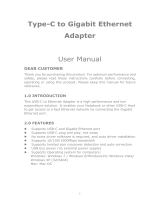
Getting to Know Your Wireless Router 7
Installing Your Wireless Router
To help you set up your router and get on the Internet quickly, the Resource CD contains a Smart
Wizard™. The Smart Wizard walks you through the steps required to connect your router and
PC(s); configure your internet settings; configure your wireless settings; and enable wireless
security for your network. When you have finished, you will be Internet ready!
You can set up your N600 wireless gigabit router using one of two methods:
• Smart Wizard Setup: The Smart Wizard setup is available on your Resource CD. See
“Installing Your Wireless Router Using Smart Wizard” on page 9 to use the Smart Wizard.
– This is the easiest option. The wizard guides you through the setup process. It automates
many of the steps and verifies that the steps have been successfully completed.
– Smart Wizard requires a PC running Microsoft Windows or a Mac.
• Manual Setup: If you cannot or prefer not to use the Smart Wizard, see “Installing Your
Wireless Router Manually (Advanced and Linux Users)” on page 11. For example, if you are
using a Linux operating system or are technically knowledgeable, select this option. If you
choose to use this option and install your router manually, for best results, install and set up
your router in this order:
1. Install and connect your wireless router to your network (see “Connecting Your N600
Wireless Gigabit Router” on page 11).
2. Set up your wireless router for Internet access (see “Setting Up Your Router for Internet
Access” on page 15).
3. Configure your wireless network and select wireless security settings to protect your
wireless network (see “Configuring Your Wireless Network” on page 19).
If you have a Linux system, you need to use the manual installation method (see
“Installing Your Wireless Router Manually (Advanced and Linux Users)” on
page 11).
Before running the Smart Wizard on a corporate PC to set up your home
router, check with your company’s network support staff. Corporate
network settings or Virtual Private Network (VPN) client software may
conflict with the default settings of a home router. If you are unsure about
whether there might be a conflict, use a different computer.




















